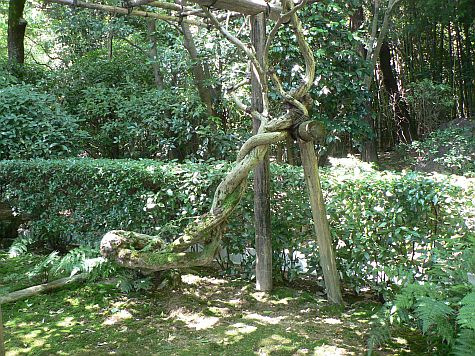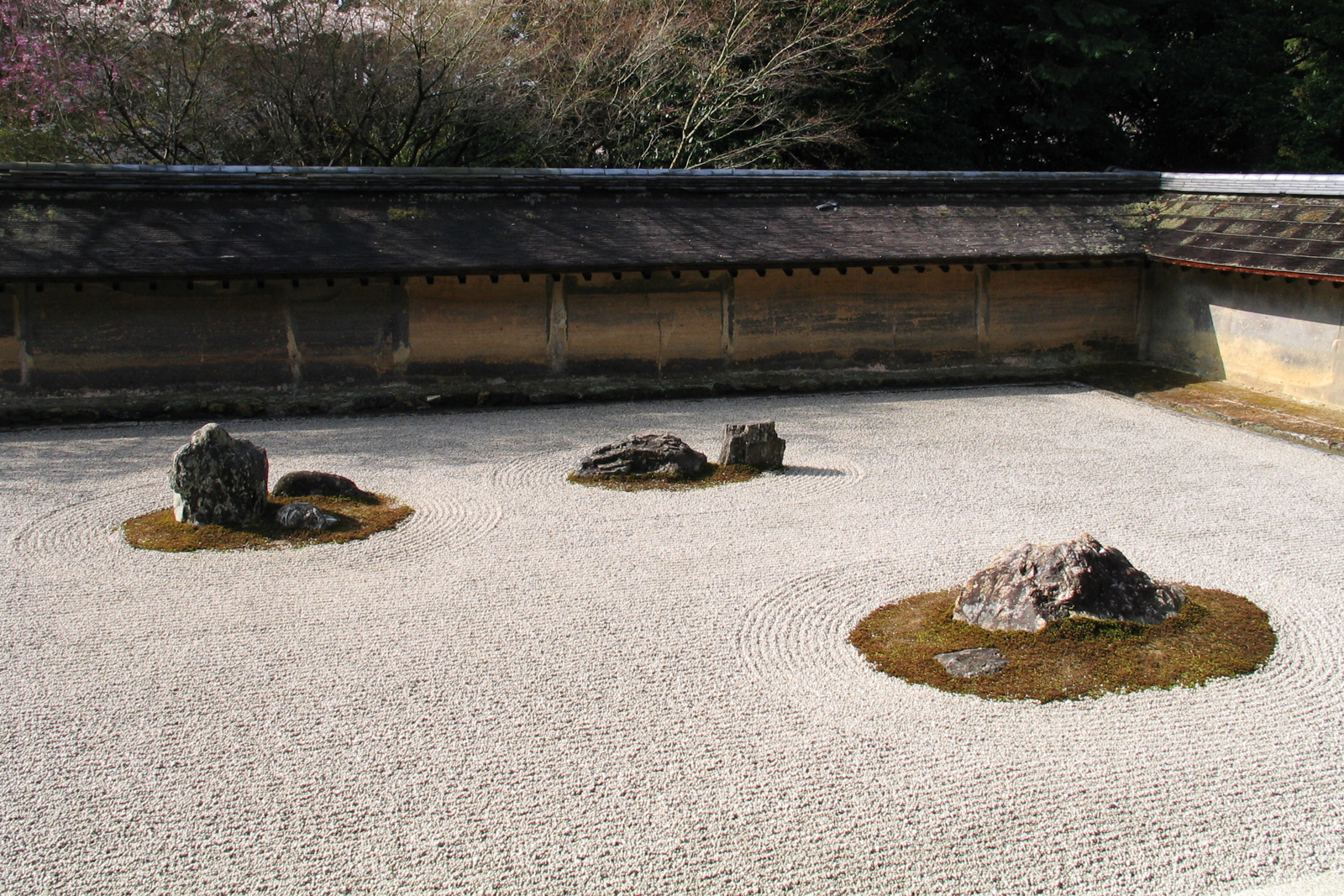
The site of the temple was originally a Fujiwara family estate. It eventually came into the hands of the Hosokawa clan branch of the Fujiwaras. Hosokawa Katsumoto inherited the residence, and lived here before the Ōnin War. After Katsumoto's death, he willed the war-ravaged property to be converted into a Zen sect temple complex. Later Hosokawa emperors are grouped together in what are today known as the "Seven Imperial Tombs" at Ryoan-ji. The burial places of these emperors -- Uda, Kazan, Ichijō, Go-Suzaku, Go-Reizei, Go-Sanjō, and Horikawa -- would have been comparatively humble in the period after their deaths. These tombs reached their present state as a result of the 19th century restoration of imperial sepulchers (misasagi) which were ordered by Emperor Meiji.
To many, the temple's name is synonymous with the temple's famous karesansui (dry landscape) rock garden, thought to have been built in the late 1400s. The garden consists of raked gravel and fifteen moss-covered boulders, which are placed so that, when looking at the garden from any angle (other than from above) only fourteen of the boulders are visible at one time. It is traditionally said that only through attaining enlightenment would one be able to view the fifteenth boulder. (Also, if facing the garden from the far right and about 8 feet back a person of about 1.82m(6ft) in height can see all 15 boulders, though the small boulder farthest to the left appears to be part of the much larger boulder immediately next to it).







credited from wikipedia.org

1 comment:
I see that you liked the the photo of the intertwined trees from our visit to Kyoto in July 2007.
It's an interesting mix of photographs that you've chosen, because I think you've the garden in all four seasons!
Post a Comment